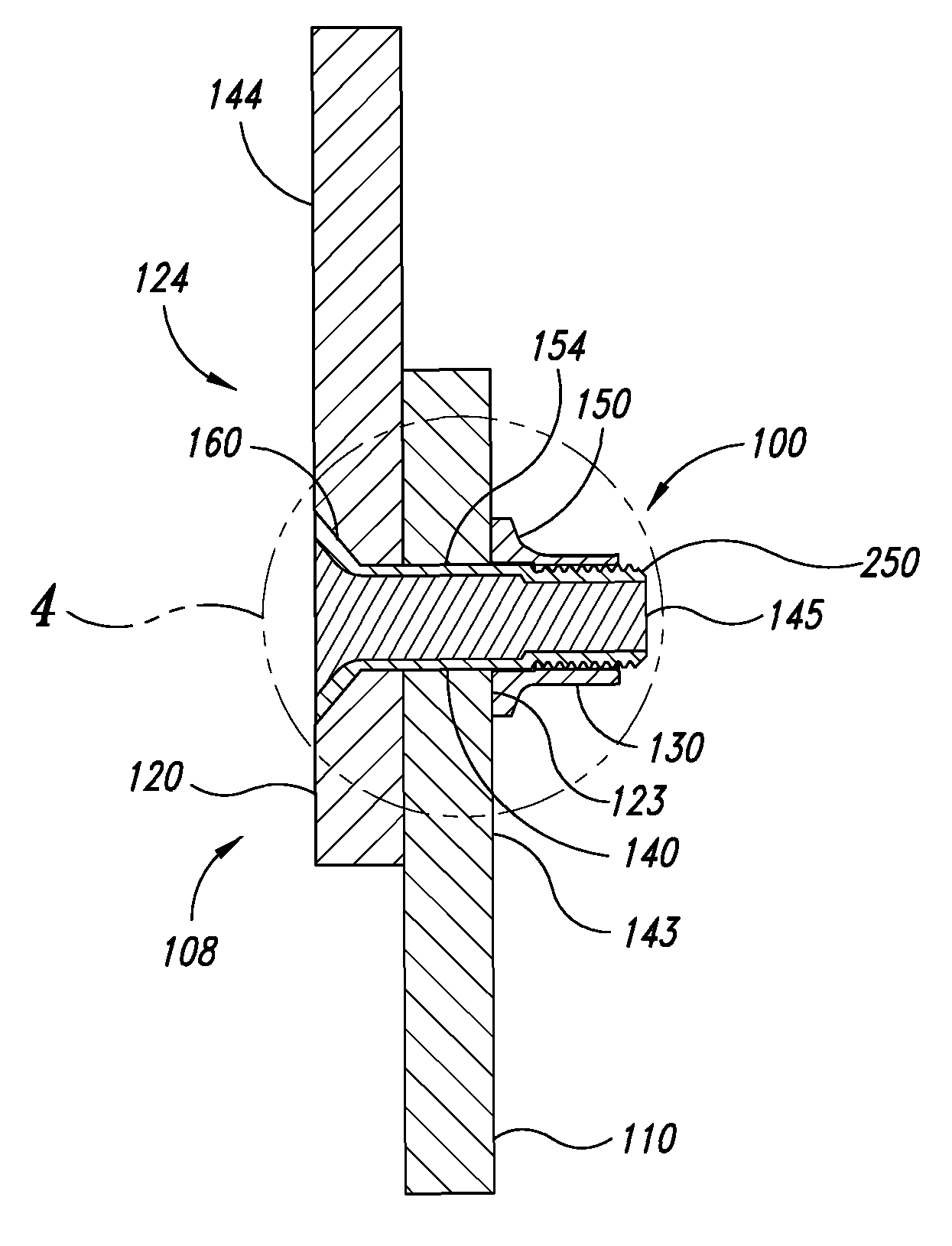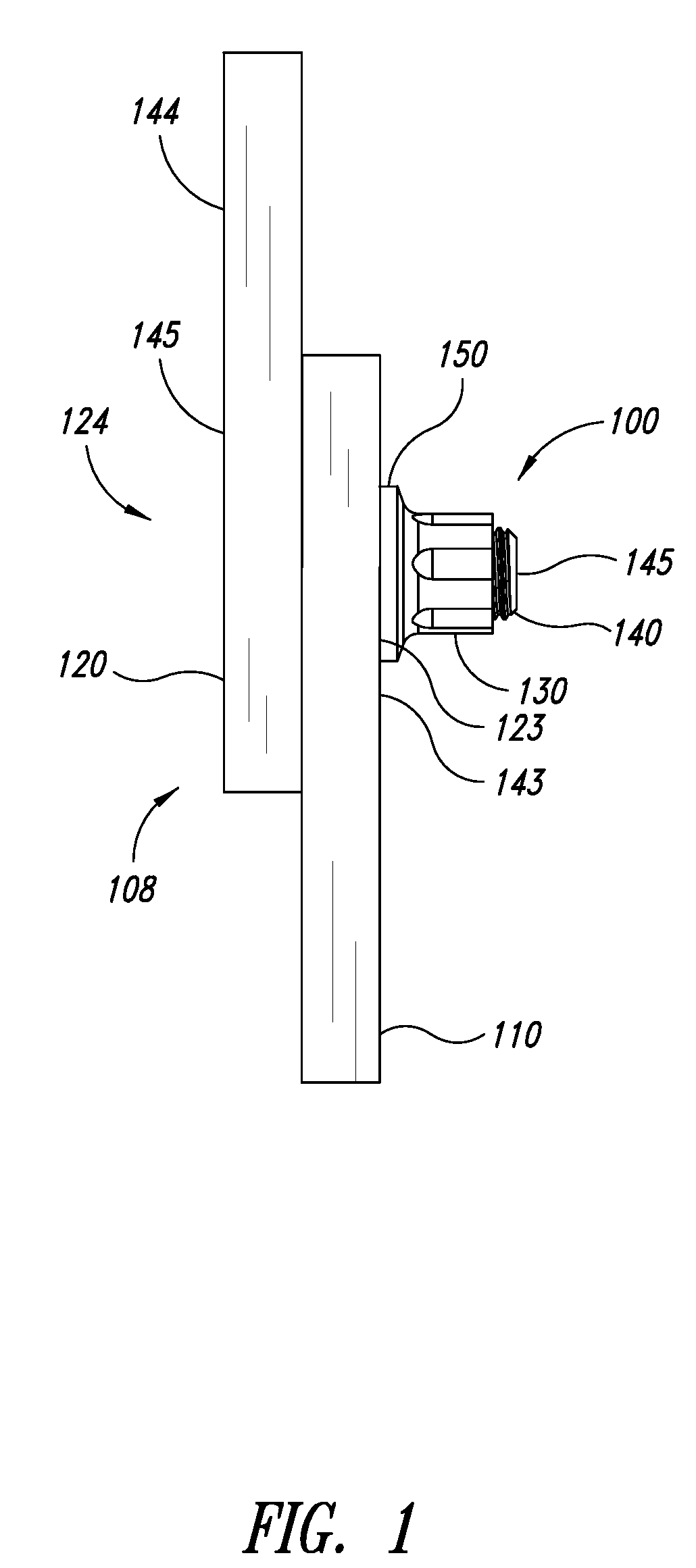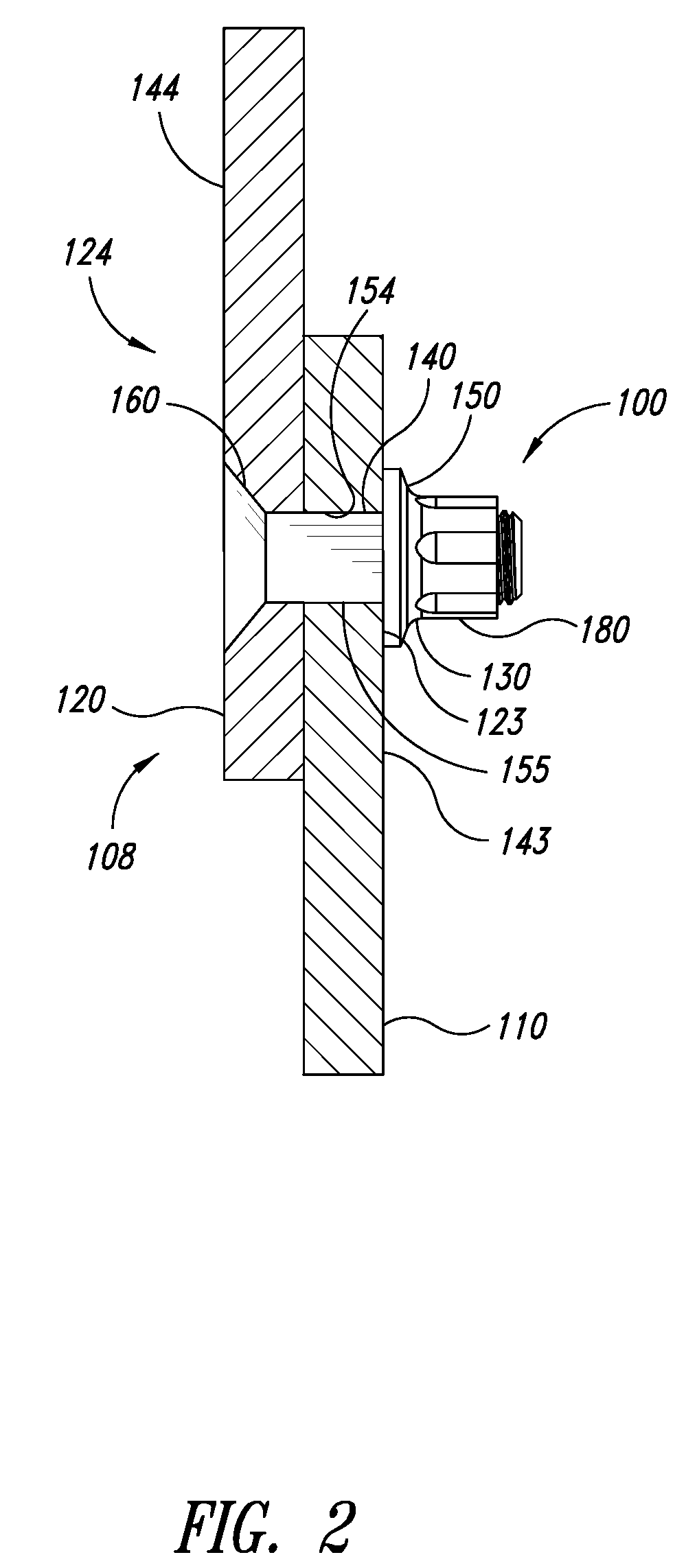Expandable fastener assembly with deformed collar
a technology of expandable fasteners and collars, which is applied in the direction of threaded fasteners, screwed fasteners, manufacturing tools, etc., can solve the problems of increased wear and corrosion, unfavorable mechanical characteristics, and unfavorable mechanical properties of joints, so as to achieve desirable mechanical characteristics and enhance performance
- Summary
- Abstract
- Description
- Claims
- Application Information
AI Technical Summary
Benefits of technology
Problems solved by technology
Method used
Image
Examples
Embodiment Construction
[0044]In the following description, certain specific details are set forth in order to provide a thorough understanding of various aspects of the representative embodiments. One skilled in the art, however, will understand that the embodiments may be practiced without these details. The fastener assemblies, installation apparatuses, and processes disclosed herein can be used to couple together workpieces and, in some embodiments, may improve in-service performance of these workpieces, such as electrical performance, mechanical performance, fatigue performance, or the like. The fastener assemblies can be expandable fastener assemblies installed in different types of workpieces and at a wide range of locations. The term “expandable fastener assembly” refers to a fastener assembly both in a pre-expanded state and an expanded state, unless the context dictates otherwise.
[0045]Unless the context requires otherwise, throughout the specification and claims which follow, the word “comprise”...
PUM
| Property | Measurement | Unit |
|---|---|---|
| angle | aaaaa | aaaaa |
| thickness | aaaaa | aaaaa |
| thickness | aaaaa | aaaaa |
Abstract
Description
Claims
Application Information
 Login to View More
Login to View More - R&D
- Intellectual Property
- Life Sciences
- Materials
- Tech Scout
- Unparalleled Data Quality
- Higher Quality Content
- 60% Fewer Hallucinations
Browse by: Latest US Patents, China's latest patents, Technical Efficacy Thesaurus, Application Domain, Technology Topic, Popular Technical Reports.
© 2025 PatSnap. All rights reserved.Legal|Privacy policy|Modern Slavery Act Transparency Statement|Sitemap|About US| Contact US: help@patsnap.com



